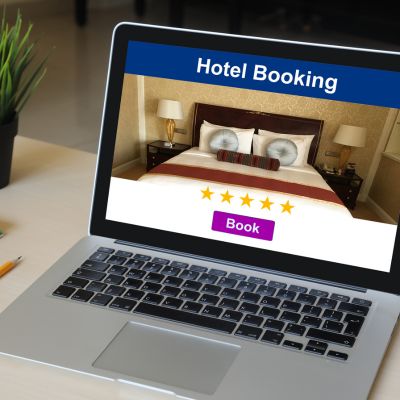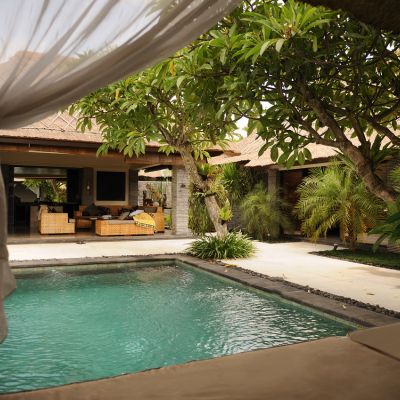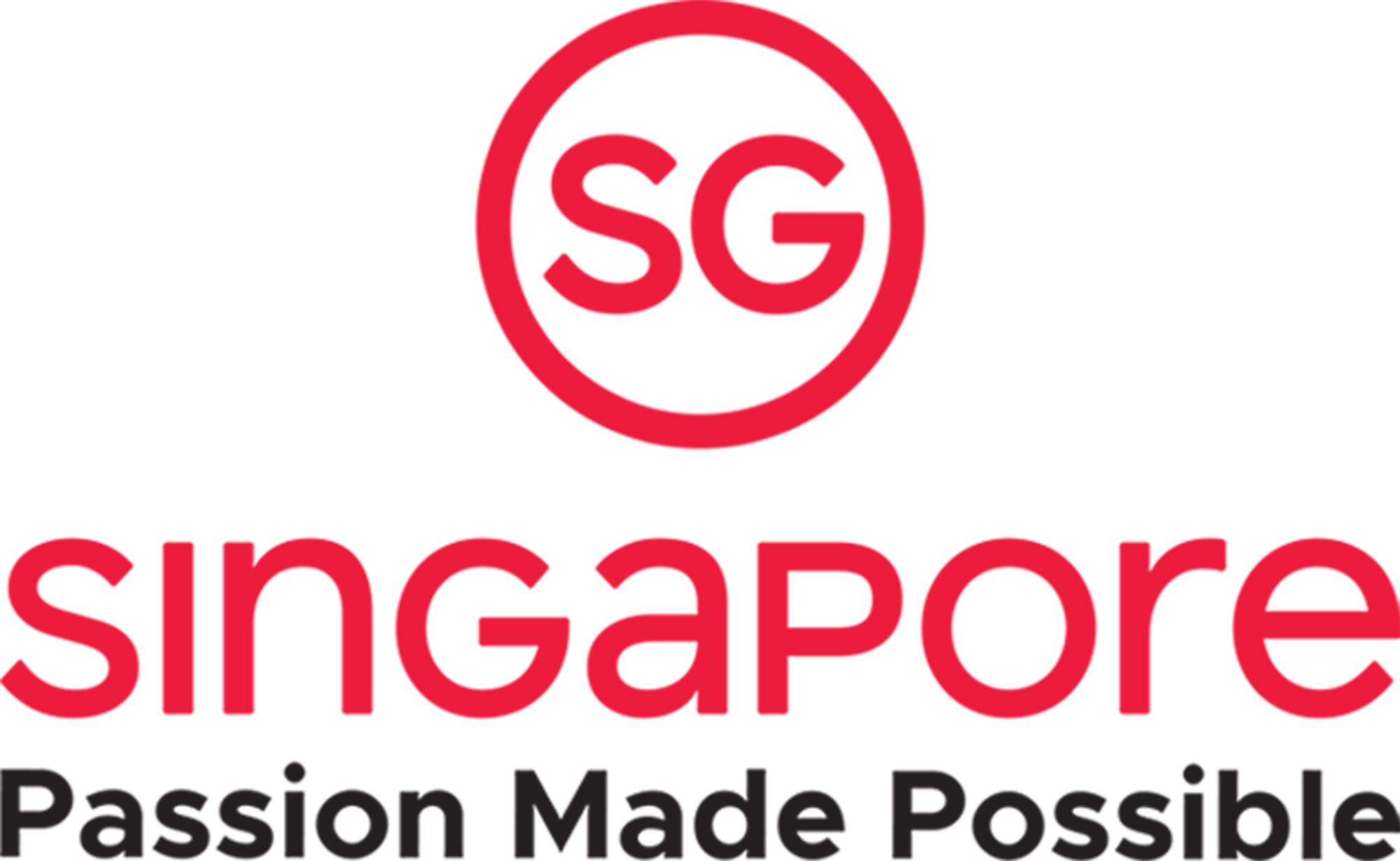How can you accurately gauge your hotel’s financial health and maximize its revenue potential? Understanding TRevPAR has become essential for many hotel managers and owners in today’s competitive hospitality landscape.
Unlike traditional metrics, TRevPAR (Total Revenue Per Available Room) offers a comprehensive view of revenue generation by considering every income stream—not just room bookings.
This metric is gaining popularity as hoteliers seek to fully capitalize on their properties’ revenue potential, making it a must-know tool in modern hotel revenue management.
Let’s dive in further to understand TRevPAR, its importance, and its impact.
What is TRevPAR?
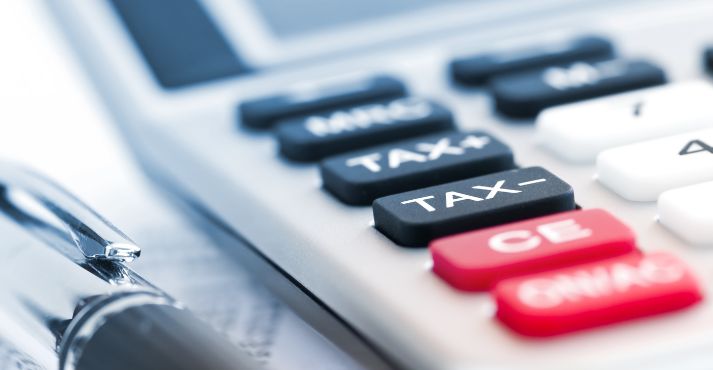
TRevPAR, or Total Revenue Per Available Room, is a metric that evaluates a hotel’s overall revenue on a per-room basis.
Unlike RevPAR (Revenue Per Available Room), which only measures room revenue, TRevPAR includes all revenue sources within a hotel, such as dining, spa services, event hosting, and other amenities.
When these additional income streams are included, TRevPAR provides a complete picture of a hotel’s revenue performance and overall KPIs.
Revenue Streams in TRevPAR Calculations:
- Room Revenue: Income from bookings and room services.
- Dining and F&B: Earnings from restaurants, bars, and catering services.
- Spa and Wellness: Revenue from spa services, fitness centers, and wellness programs.
- Event Spaces and Meeting Rooms: Income from hosting events, conferences, and weddings.
- Other Amenities: Any additional services or products, such as parking, in-room entertainment, and souvenir shops.
Importance of TRevPAR in Hotel Management
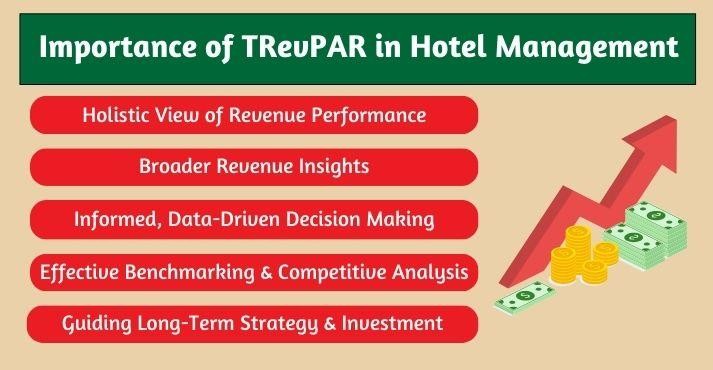
Comprehending what TRevPAR is is essential for hotel managers and owners looking to maximize their property’s revenue potential.
Traditional metrics, such as RevPAR (Revenue Per Available Room), are valuable for measuring income generated directly from rooms, but they don’t account for additional revenue streams like dining, wellness services, or event spaces.
TRevPAR, or Total Revenue Per Available Room, provides a broader, more inclusive perspective, highlighting the value of non-room revenue sources.
This holistic approach is crucial for accurately gauging hotel performance and understanding the financial contributions of each department within a property.
1. Holistic View of Revenue Performance
TRevPAR offers a comprehensive insight into a hotel’s overall revenue by factoring in every income-generating area within the property. Instead of focusing solely on room bookings, TRevPAR considers additional revenue sources, such as food and beverage (F&B), spa and wellness services, recreational activities, and event hosting.
When tracking these diverse income streams, TRevPAR enables hotel managers to see where the hotel’s true revenue potential lies. This broad overview is invaluable in hotel revenue management, as it accurately assesses the property’s complete financial picture, revealing areas of strength and potential growth.
2. Broader Revenue Insights
Hotels are complex ecosystems with various departments contributing to the bottom line. TRevPAR highlights these contributions by tracking income from services like restaurants, bars, event spaces, and other amenities that might otherwise be overlooked. For instance, many hotels find that dining or spa services represent substantial sources of income, especially in properties that attract locals or have high-end dining options.
With TRevPAR, hotel managers can see which services drive the most revenue beyond room occupancy. For example, a hotel that offers exclusive dining experiences or hosts large-scale events may see significant revenue from F&B or event rentals. When understanding these contributions, management can allocate resources and focus efforts on departments that maximize revenue, leading to stronger financial metrics for a hotel.
3. Informed, Data-Driven Decision Making
One significant advantage of TRevPAR is that it facilitates data-driven decision-making. Managers can use TRevPAR data to determine which areas of the hotel are worth investing in, enabling a more intelligent allocation of budget and resources. For example, if a hotel sees consistent revenue from its wellness center, management might expand spa services or add new wellness programs to drive even higher revenue.
TRevPAR data also helps optimize service offerings, marketing, and sales strategies. For instance, if event spaces contribute significantly to TRevPAR, the hotel might prioritize marketing efforts toward corporate clients or wedding planners. By tailoring promotions to the most profitable services, hotels can improve guest satisfaction and increase overall revenue.
4. Effective Benchmarking and Competitive Analysis
TRevPAR serves as a powerful hotel benchmarking tool. When comparing a hotel’s TRevPAR with industry averages or similar properties, managers can gauge their property’s performance and identify areas for improvement. For example, if a property’s TRevPAR is below the average for its market, it could indicate underperformance in non-room services, suggesting a need for targeted improvements in those areas.
Additionally, TRevPAR enables competitive analysis, allowing hotels to compare their revenue-generating capacity with that of competitors. A hotel with a higher TRevPAR may excel in ancillary services or attract guests to on-site amenities, providing insights for strategic adjustments.
5. Guiding Long-Term Strategy and Investment
TRevPAR is not just a snapshot of current revenue; it’s also a guide for long-term planning. When analyzing trends over time, hotel managers can understand which revenue streams show the most growth potential, informing future investments and expansions. For example, suppose TRevPAR data shows a steady increase in revenue from dining services. In that case, the hotel may expand restaurant offerings or introduce new cuisine options to attract more patrons.
This long-term view of revenue helps hotel owners and managers align their strategies with evolving guest preferences and market trends. When investing in luxury spa facilities or upgrading event spaces, TRevPAR provides a roadmap for sustainable growth, keeping the hotel competitive and profitable.
How to Calculate TRevPAR?
Calculating TRevPAR is straightforward yet powerful, offering valuable insights into the financial metrics of a hotel. Here’s the formula:
TRevPAR = Total Revenue ÷ Available Rooms
Example Calculation:
Let’s say a hotel has generated $500,000 in total revenue in one month and has 100 available rooms. Here’s how to calculate TRevPAR:
- Total Revenue: $500,000
- Available Rooms: 100
- TRevPAR Calculation: $500,000 ÷ 100 = $5,000
In this example, the TRevPAR is $5,000, meaning each available room generates an average of $5,000 in total revenue, giving the hotel a clearer picture of its overall earning capacity beyond room bookings.
How to Boost TRevPAR in Your Hotel?

Increasing TRevPAR is essential for hotels aiming to maximize revenue from all available sources. A strategic approach to hotel KPIs and hotel revenue management is necessary to achieve this.
When focusing on areas such as effective revenue management, optimizing ancillary services, enhancing guest satisfaction, and leveraging data analytics, hotels can substantially improve hotel performance. Here are some proven methods for boosting TRevPAR.
1. Revenue Management
Effective revenue management is critical to optimizing room rates and maximizing income. This involves adjusting room prices based on demand, seasonal patterns, booking trends, and competitor pricing.
One of the most effective methods within revenue management is open pricing, a strategy that allows hotels to adjust rates dynamically, responding to real-time demand fluctuations.
Rather than setting fixed prices, open pricing enables hotels to offer varying rates for different room types, dates, and lengths of stay, ensuring they capture maximum revenue per booking.
- Example: During peak seasons or local events, a hotel may increase room rates to reflect high demand but offer attractive discounts on dining packages, spa services, or event space rentals. This approach encourages guests to book additional services at a discount, resulting in higher TRevPAR as guests spend across multiple areas of the hotel. When combining premium room pricing with appealing packages, hotels can capitalize on peak demand while still attracting revenue through diverse streams.
2. Ancillary Revenue
Boosting hotel ancillary revenue sources is another powerful way to increase TRevPAR. Ancillary services, which include anything beyond basic room bookings, add diversity to a hotel’s revenue sources and offer a consistent income stream, even during low occupancy periods.
From food and beverage (F&B) services to wellness facilities and event spaces, these additional offerings are valuable for revenue generation and enhancing the guest experience.
- Example: Many restaurants and hotels boost TRevPAR by introducing seasonal dining experiences, like a special chef’s menu or themed dining nights like the Seasonal Tastes at The Westing, Singapore. Seasonal menus or unique tasting events attract hotel guests and local patrons, effectively increasing F&B revenue.
- Hotels with wellness facilities may also offer exclusive spa treatments or wellness packages, attracting guests seeking relaxation and well-being. Such specialized offerings increase TRevPAR by encouraging guests and locals to spend on these services, adding value beyond room revenue alone.
3. Guest Satisfaction
Guest satisfaction is essential to repeat business, positive reviews, and referrals, which contribute to sustained revenue growth.
Ensuring guests have a memorable experience at each touchpoint—whether in dining, wellness, or room amenities—encourages them to explore the hotel’s offerings and increases the likelihood of additional spending.
Strategies to Enhance Guest Satisfaction:
- Personalized Experiences: Customizing experiences in areas like spa and wellness boosts the guest journey. For instance, personalized spa packages or tailor-made dining recommendations make guests feel valued and encourage them to take advantage of additional amenities.
- Loyalty Programs: Delivering discounts on room upgrades, dining, or wellness facilities can incentivize guests to spend more. Loyalty programs create long-term engagement, increasing the probability of repeat visits.
- Guest Feedback Integration: Continuously improving services based on feedback allows hotels to address pain points and adapt to guest preferences. Incorporating feedback into service offerings creates a guest-centered approach that increases satisfaction, leading to repeat business and higher overall revenue.
High guest satisfaction often leads to positive reviews and word-of-mouth recommendations, which attract new guests.
Satisfied guests are more likely to return and explore additional amenities, so prioritizing guest satisfaction directly impacts TRevPAR by promoting loyalty and encouraging further spending on non-room services.
4. Data Analysis
Data-driven insights are vital in hotel revenue management, helping hoteliers make informed decisions to optimize revenue. When analyzing guest preferences, spending behaviors, and peak times for certain amenities, hotels can identify trends and tailor their offerings accordingly.
Data analytics also allows hotels to implement targeted promotions, fine-tune pricing strategies, and adjust hotel operations based on real-time demand, maximizing TRevPAR.
Suppose data analysis reveals that specific spa treatments are in high demand during weekends. In response, the hotel could introduce weekend bundles that combine room bookings with popular spa treatments at a slightly discounted rate.
This makes the hotel’s offerings more appealing and encourages guests to book both the room and additional services, thereby increasing overall TRevPAR.
Similarly, if a restaurant experiences peak traffic during certain times, special offers or promotions can be strategically timed to drive maximum revenue.
Tracking Preferences for Customization: When monitoring guest spending habits, hotels can also personalize offers for repeat guests. For example, if data shows that a particular guest frequently dines at the hotel restaurant, offering them an exclusive dining package could incentivize additional spending. This targeted promotion approach boosts guest satisfaction and increases the likelihood of guests exploring other services, resulting in higher TRevPAR.
TRevPAR vs. Other Hotel KPIs
While TRevPAR is a comprehensive metric, it’s essential to understand how it compares to a hotel’s other financial metrics to gain a full picture of its performance.
1. TRevPAR vs. RevPAR
RevPAR, or Revenue Per Available Room, focuses solely on room revenue and excludes other income streams. While RevPAR is valuable for measuring room occupancy and rate effectiveness, TRevPAR offers a broader perspective by including additional revenue sources.
This distinction makes TRevPAR ideal for analyzing the full revenue-generating potential of the hotel rather than just the rooms.
2. TRevPAR vs. GOPPAR
GOPPAR (Gross Operating Profit per Available Room) measures gross operating profit per room, factoring in operating costs alongside revenue. While TRevPAR emphasizes revenue alone, GOPPAR provides insight into a hotel’s profitability after accounting for expenses.
These two metrics complement each other: while TRevPAR shows where revenue is generated, GOPPAR highlights the impact of operational efficiency on profitability.
Conclusion
In the dynamic hospitality industry, understanding TRevPAR and how to leverage it can significantly increase a hotel’s revenue potential.
Unlike traditional KPIs, TRevPAR offers a holistic view by capturing revenue across all departments, making it an invaluable metric for comprehensive hotel revenue management.
When comparing TRevPAR to other hotel KPIs like RevPAR and GOPPAR, hotel managers gain a deeper understanding of their property’s performance and can make data-driven decisions that align with their goals.
Bumping TRevPAR through effective revenue management, guest satisfaction, or data analysis can help hotels achieve sustained growth and improved performance.

